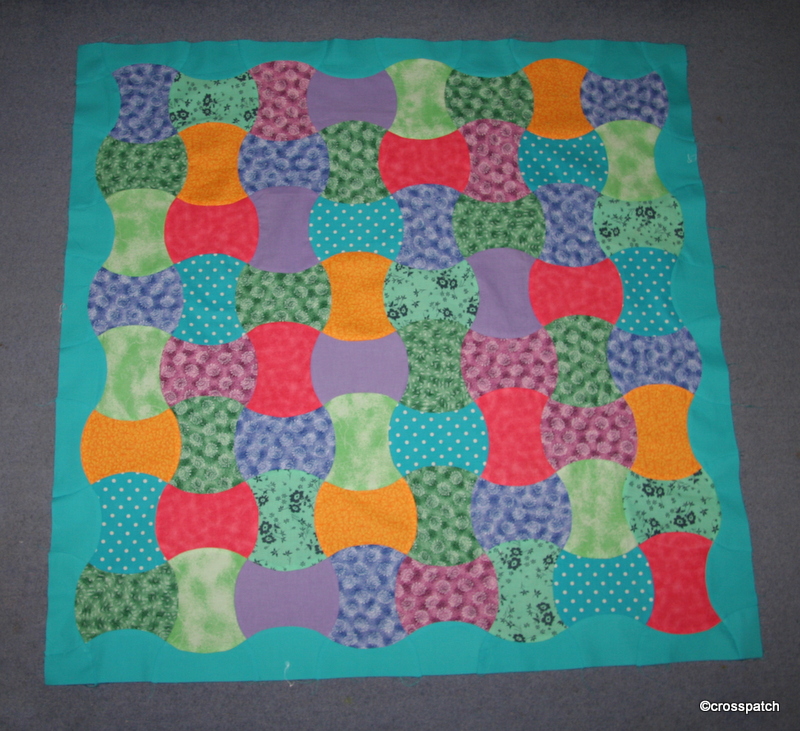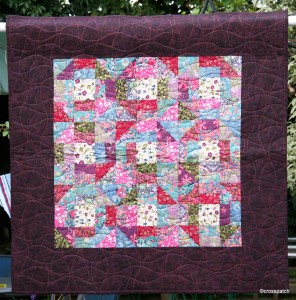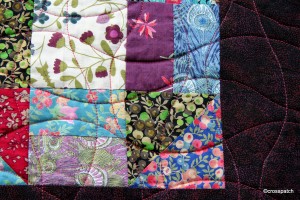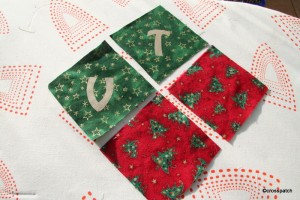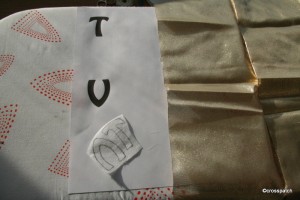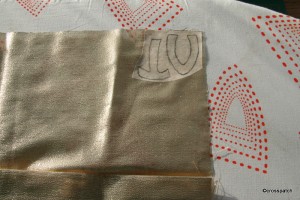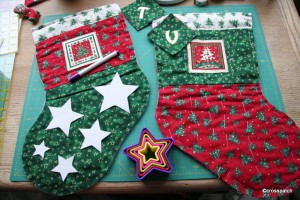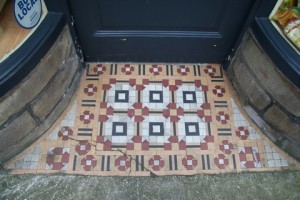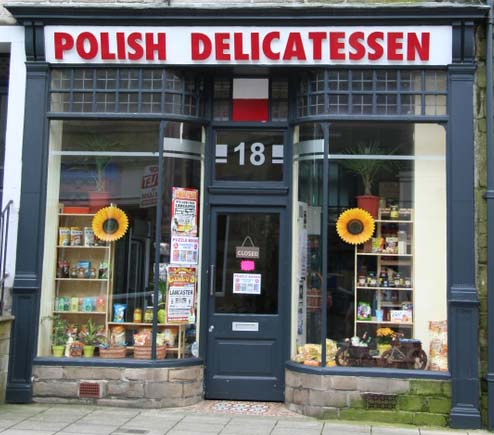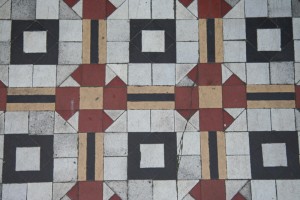I have used a spare apple core for the quilt label, and my lovely Janome sewing machine supplied the pretty script to write the words, “Scrappy Apple Core Quilt” My name and the date. It’s really important to put a label on the back of every quilt you make and to put it on before you put the quilt together and quilt it. Why? Many reasons; posterity for one, if your quilt is treasured and survives for hundreds of years as some do, the owners will one day wonder who made it, when and why – so tell them.
Quilts are used to evidence the history of fabrics and fashions but only if they can be reliably dated. Let the historians be happy to have found a dateable treasure in your quilt.
If the label goes on before the quilt is put together and quilted through, then it’s difficult to remove, it can only be covered up by someone who might wish to change its history or attribution, ( I mean pass it off as their own) later to be happily rediscovered, when the stitching begins to come apart.
If the quilt is made specifically for a person or to celebrate an event in someone’s life, then put it on the quilt label, but be warned….. I once heard of a quilt that was made to celebrate a marriage, it took so long to make that the couple had divorced before it was completed.
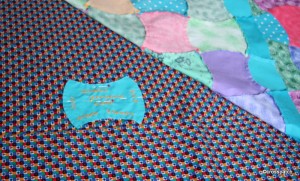
The backing was a happy find in my stash, it’s what was left over from the backing of a much larger quilt, the left over piece was too wide but not long enough, however there was a long strip that I cut off the side of the previous quilt backing, so I managed to stitch on the strip and make a square big enough for the backing of this quilt. There’s a little bit over, perhaps it will back the cushion I might make to go with the quilt. And there’s even enough for the hanging sleeve, how lucky is that!


